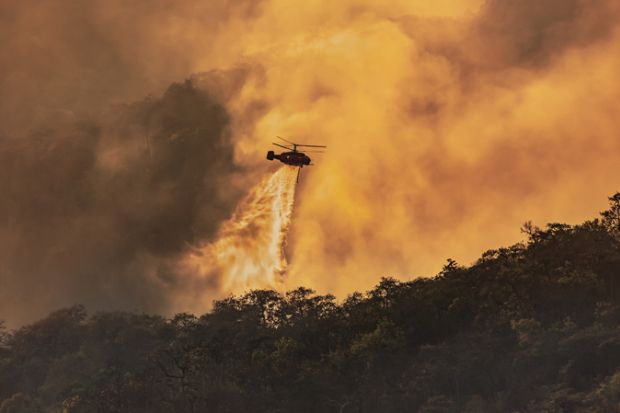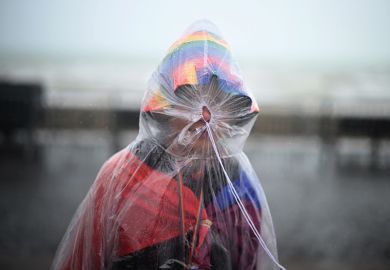We are in a climate emergency. During 2021, the world has watched as not only Californian forests, but even Greek seas, have burned. These unfolding (anthropo)scenes seem apocalyptic. In his new book, Philip Jenkins explores how dramatic shifts in climate have long been understood in religious terms – as “apocalypse, millennium, and Judgment” – by the people who experienced them. Perhaps more significantly, he demonstrates that “climate shocks” have repeatedly reshaped global religion and spirituality.
Shrinking biodiversity and mass species extinction are not only a tragedy, but a major threat to the viability of humankind. Meanwhile, the famine, conflict and mass displacement exacerbated by climate change challenge and destabilise finely balanced international political and social orders. In Climate, Catastrophe, and Faith, Jenkins examines how climate change has often been accompanied by social and religious change: from the ways that the “warmth and prosperity of the High Middle Ages” shaped Catholic doctrine to the disruptive effects of El Niño in the 1980s, which enabled Pentecostal and evangelical churches to grow right across rural Central America.
One climate shock whose tremors we still feel today was the Little Ice Age, which spanned the late 13th to mid-19th centuries. A series of dramatic waves of cold weather chilled especially Eurasia and the Middle East, but also parts of China and East Asia. Food was often scarce, and during the period between 1310 and 1325 Europe endured its Great Famine. Starvation left populations vulnerable to disease, including the Black Death. This emerged in China in 1331 and spread to Europe the following decade, where it wiped out between a third and a half of the continent’s population. The global pestilence that accompanied the Little Ice Age created a mood of fear and desperation among malnourished populations. As Jenkins shows, the years around 1320 saw outbreaks of paranoia and scapegoating throughout the Christian and Muslim worlds. In the early 1320s, as in the early 2020s, plague popularised conspiracy. Christians dreaded Jews, witches and lepers, their definitions of heresy expanded, and ever more blood was spilled in their efforts to root out dissent. They were in turn stigmatised by Muslims; interfaith violence and persecution soared, and with it the popularity of apocalyptic beliefs.
Throughout Climate, Catastrophe, and Faith, Jenkins demonstrates how the religious upheavals triggered by climate events redistributed believers and redrew the geopolitical map. In the case of the Little Ice Age, many of Europe’s Jews fled to eastern parts of the continent, where they largely remained until the devastation of the Holocaust. Christians were reduced to a minority group in the Islamic world and were persecuted in China, where conditions catalysed the rise of “a robustly nationalist and xenophobic regime”.
Five centuries later, as Jenkins goes on to describe, another series of climate shocks – including successive years of unprecedented drought and cold – would hit the US, which in 1819 “suffered a ruinous financial panic and an ensuing depression”. There, as in Europe, the crises of the early 19th century provided fertile ground for religious revivals, including an upsurge in evangelical enthusiasm that still informs American politics and law-making.
This timely and meticulously researched book makes an important contribution to the growing body of literature engaging religion and history with ecology and climate change.
Ruby Guyatt is a researcher, teacher and writer who recently completed a doctorate in the philosophy of religion at the University of Cambridge.
Climate, Catastrophe, and Faith: How Changes in Climate Drive Religious Upheaval
By Philip Jenkins
Oxford University Press, 276pp, £22.99
ISBN 9780197506219
23 September 2021
POSTSCRIPT:
Print headline: Fair-weather faith and climate foes
Register to continue
Why register?
- Registration is free and only takes a moment
- Once registered, you can read 3 articles a month
- Sign up for our newsletter
Subscribe
Or subscribe for unlimited access to:
- Unlimited access to news, views, insights & reviews
- Digital editions
- Digital access to THE’s university and college rankings analysis
Already registered or a current subscriber? Login








